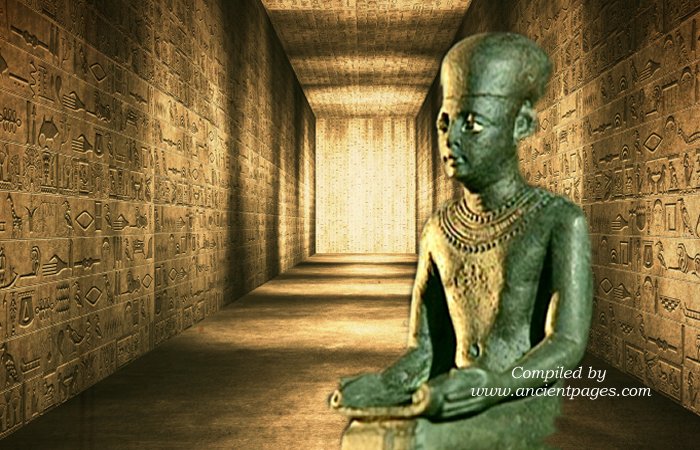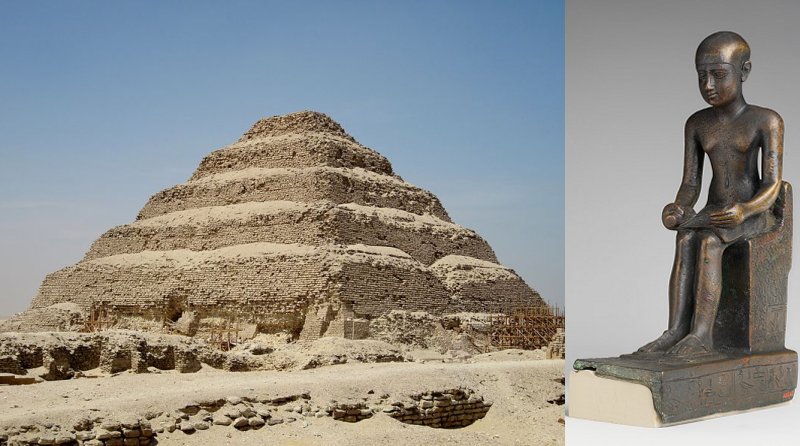Where Is The Tomb Of Imhotep, Pharaoh Djoser’s Magician Hidden?
Ellen Lloyd - AncientPages.com - Egyptologists have unearthed many magnificent tombs. However, there are still burial places belonging to some of the most influential people in Egypt's ancient history that scientists have been unable to locate.
The Land of the Pharaohs refuses to give up some of its secrets. Still, it is a matter of time before archaeologists announce they have finally found the resting place of certain Pharaohs, Queens, high priests, or other individuals who can shed more light on ancient Egyptian history.
The tomb of King Djoser's magician, Imhotep, has not been found yet.
Imhotep was never a Pharaoh, but he was a fascinating individual whom the modern world has praised 3,000 years after his death.
Born in the 27th century B.C. Imhotep became famous for his extraordinary "intelligence and wisdom. Imhotep, or "he who comes in peace," was an ancient Egyptian genius and the great architect of the world's first known monumental stone building, the Step Pyramid at Sakkara." 1
Being the high priest of God Ra and the trusted advisor of the Pharaoh Djoser (reigned c.2630 - c.2611 BC), Imhotep and the Egyptian King "decided to build an enormous mastaba of stone, but at some point, during construction, they built another mastaba on top of the first—and then another on top of the second. They continued this process until they had enlarged the structure into the world's first pyramid. It was what we now call a "step pyramid," consisting of six terraces some 200 feet (60 m) high. Imhotep wanted the tomb to accommodate the Pharaoh's rise into the heavens." 1
Left: The step pyramid of Djoser. Credit: Olaf Tausch - CC BY 3.0 - Right: A statue of Imhotep at the Metropolitan Museum of Art. Credit: Metropolitan Museum of Art - CC0
Egyptologists can today confirm with certainty that Vizier Imhotep was an individual of great importance, and "his high standing at court is indicated in the inscription on the base of a broken-off statue of Djoser where, after the name of the king, Imhotep's titles read:
The Treasurer of the King of Lower Egypt, the First after the King of Upper Egypt, Administrator of the Great Palace, Hereditary Lord, the High Priest of Heliopolis, Imhotep the builder, the sculptor, the maker of stone vases..." 2
However, Imhotep is credited with much more than only the construction of Djoser's step pyramid. Imhotep also worked as a physician, astronomer, and writer during his lifetime. His knowledge was so vast and impressive that he received a divine status. He became worshiped as the god of medicine in Egypt and Greece, where he was identified with the Greek god of medicine, Asclepius.
"He is said to have extracted medicine from plants and treated diseases such as appendicitis, gout, and arthritis." 1
As his fame grew, he became the patron of scribes and was considered God Ptah's son. Few non-royal ancient Egyptians were given divine status, but Imhotep's healing mastery earned him the glory of being worshipped as a deity.
Considering the importance of Imhotep's role in ancient Egypt, one would naturally want to learn more about this fascinating individual. Finding his tomb would be beneficial to Egyptologists. Some attempts to locate Imhotep's burial place have been made, but the whereabouts of his grave are still unknown. Logic dictates Imhotep's tomb should be somewhere in Saqqara, perhaps near Pharaoh Djoser's burial complex.
"A few years ago, the world of Egyptology was more or less electrified by the discovery of what might have been the tomb of Imhotep.
Unfortunately, we can't be more specific than that. The tomb is—or isn't—at Sakkara, one of a group of large Third Dynasty mastabas—those of important people, to judge by size.
Not only were all these tombs thoroughly plundered in antiquity, but they were also virtually destroyed by later builders.
Walter Emery, who first excavated in the area, believed that Imhotep's tomb was somewhere and that it served as the cult center for a Ptolemaic temple dedicated to the deified vizier. Ensuing excavations uncovered a fantastic labyrinth of underground galleries containing the mummies of hundreds of thousands of ibises and baboons. These animals were sacred to Thoth, god of learning, who was regarded as the divine father of Imhotep.
Perhaps one of the desecrated tombs was his. Maybe it is yet to be found. People are still looking." 3
Archaeologists think the northern part of Saqqara is likely home to several high-status tombs, but the area has not been properly excavated. It is a vast region where digging is labor-intensive and time-consuming.
Who knows, maybe archaeologists excavating in Egypt will tell the world anytime soon they have finally unearthed the tomb of Imhotep, or perhaps it will never be found. Treasures of ancient Egypt tend to be hidden for long. Only time can tell.
Written by Ellen Lloyd – AncientPages.com
Updated on Oct 19, 2023
Copyright © AncientPages.com All rights reserved. This material may not be published, broadcast, rewritten or redistributed in whole or part without the express written permission of AncientPages.com
Expand for referencesMore From Ancient Pages
-
 Real-Life Excalibur Found Underwater In Bosnia – Medieval Sword In Stone Pulled Out
Archaeology | Oct 31, 2019
Real-Life Excalibur Found Underwater In Bosnia – Medieval Sword In Stone Pulled Out
Archaeology | Oct 31, 2019 -
 The Oseberg Tapestry And Other Artifacts Show Intense Colors Were A Viking Symbol Of Status And Wealth
Featured Stories | Sep 27, 2021
The Oseberg Tapestry And Other Artifacts Show Intense Colors Were A Viking Symbol Of Status And Wealth
Featured Stories | Sep 27, 2021 -
 Evidence Scots And Irish Settled Iceland A Century Before The Vikings?
Featured Stories | Jan 7, 2023
Evidence Scots And Irish Settled Iceland A Century Before The Vikings?
Featured Stories | Jan 7, 2023 -
 How Strong Is The Link Between Sanskrit And European Languages?
Linguistic Discoveries | Aug 5, 2020
How Strong Is The Link Between Sanskrit And European Languages?
Linguistic Discoveries | Aug 5, 2020 -
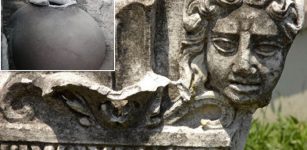 Huge Phitos (Jar) Unearthed In Ancient City Of Prusias ad Hypium, Turkey
Archaeology | Jun 26, 2022
Huge Phitos (Jar) Unearthed In Ancient City Of Prusias ad Hypium, Turkey
Archaeology | Jun 26, 2022 -
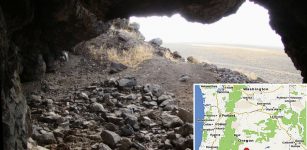 Oldest Preserved Remains Of Bed Bug Found In Paisley Caves, Oregon
Archaeology | Apr 7, 2017
Oldest Preserved Remains Of Bed Bug Found In Paisley Caves, Oregon
Archaeology | Apr 7, 2017 -
 How Did 20th-Century Philosophers Explain Ghosts And Other Spooky Subjects?
Featured Stories | Nov 8, 2024
How Did 20th-Century Philosophers Explain Ghosts And Other Spooky Subjects?
Featured Stories | Nov 8, 2024 -
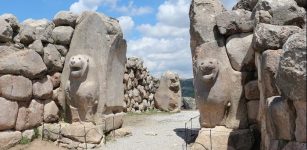 Yazılıkaya: One Of The Most Striking Religious Shrines Of The Hittite Empire
Featured Stories | Jul 4, 2023
Yazılıkaya: One Of The Most Striking Religious Shrines Of The Hittite Empire
Featured Stories | Jul 4, 2023 -
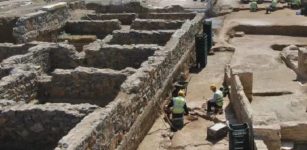 Tile Tomb Dated To The Late Hellenistic Era – Discovered In Surroundings Of Istanbul, Turkey
Archaeology | Jun 6, 2022
Tile Tomb Dated To The Late Hellenistic Era – Discovered In Surroundings Of Istanbul, Turkey
Archaeology | Jun 6, 2022 -
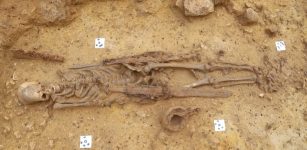 Untouched 1,300-Year-Old Grave Of Merovingian Warrior With Complete Armor Found In Ingelheim, Germany
Archaeology | Sep 19, 2023
Untouched 1,300-Year-Old Grave Of Merovingian Warrior With Complete Armor Found In Ingelheim, Germany
Archaeology | Sep 19, 2023 -
 Mystery Of The Lost Continent Destroyed By An Ancient Cataclysm – Mysterious Islands – Part 2
Featured Stories | Aug 16, 2021
Mystery Of The Lost Continent Destroyed By An Ancient Cataclysm – Mysterious Islands – Part 2
Featured Stories | Aug 16, 2021 -
 Ancient Romans Used The Poisonous Black Henbane Plant As Hallucinogenic Medicine
Archaeology | Feb 9, 2024
Ancient Romans Used The Poisonous Black Henbane Plant As Hallucinogenic Medicine
Archaeology | Feb 9, 2024 -
 Why Did Neanderthals Visit A Special Cave In Jersey For Over 100,000 Years?
Archaeology | Dec 13, 2016
Why Did Neanderthals Visit A Special Cave In Jersey For Over 100,000 Years?
Archaeology | Dec 13, 2016 -
 The Maya Produced Rubber 3,000 Years Before Goodyear
Ancient History Facts | Mar 12, 2016
The Maya Produced Rubber 3,000 Years Before Goodyear
Ancient History Facts | Mar 12, 2016 -
 Identity Of Anti-Christ And Number 666 Revealed By Ancient History Professor
Archaeology | Apr 6, 2019
Identity Of Anti-Christ And Number 666 Revealed By Ancient History Professor
Archaeology | Apr 6, 2019 -
 Time Capsule – Best Preserved 3,000-Year-Old Dwelling Ever Found In Britain
Archaeology | Jan 12, 2016
Time Capsule – Best Preserved 3,000-Year-Old Dwelling Ever Found In Britain
Archaeology | Jan 12, 2016 -
 Extraordinarily Well-Preserved 3,000-Year-Old Octagonal Sword Unearthed In Germany
Archaeology | Jun 15, 2023
Extraordinarily Well-Preserved 3,000-Year-Old Octagonal Sword Unearthed In Germany
Archaeology | Jun 15, 2023 -
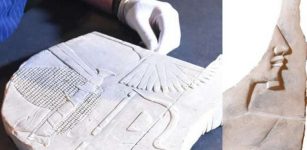 Mysterious Depiction Of Pharaoh Hatshepsut
Archaeology | May 17, 2018
Mysterious Depiction Of Pharaoh Hatshepsut
Archaeology | May 17, 2018 -
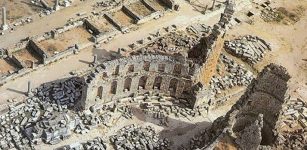 5,000-Year-Old Perga City And Kommagene Civilization: Most Of Treasures Are Still Underground
Archaeology | Dec 30, 2017
5,000-Year-Old Perga City And Kommagene Civilization: Most Of Treasures Are Still Underground
Archaeology | Dec 30, 2017 -
 The 426-Km-Long Roman Aqueduct Provided Water For Constantinople – New Study
Archaeology | May 11, 2021
The 426-Km-Long Roman Aqueduct Provided Water For Constantinople – New Study
Archaeology | May 11, 2021

